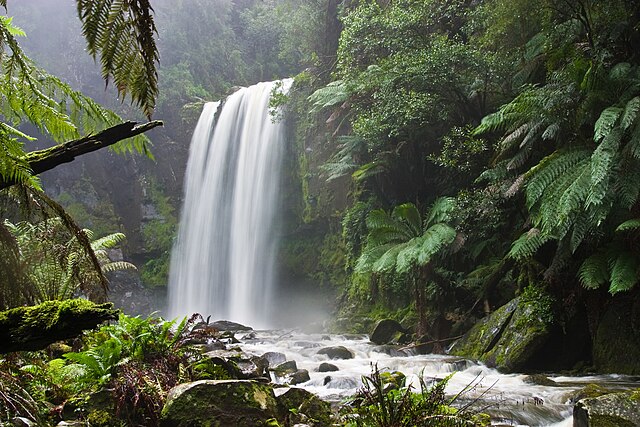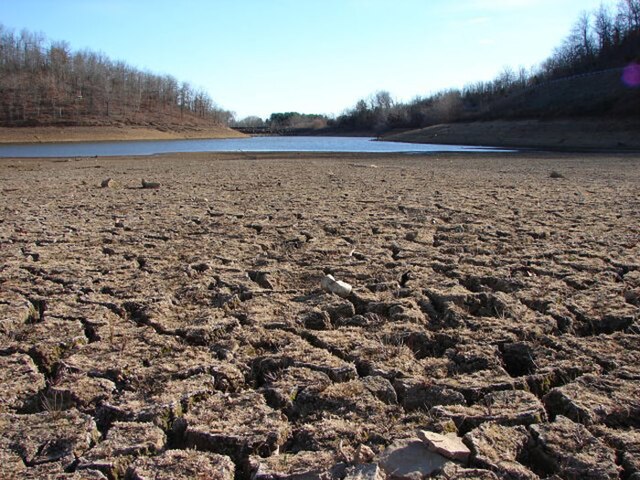Effects of climate change
Effects of climate change are well documented and growing for Earth's natural environment and human societies. Changes to the climate system include an overall warming trend, changes to precipitation patterns, and more extreme weather. As the climate changes it impacts the natural environment with effects such as more intense forest fires, thawing permafrost, and desertification. These changes impact ecosystems and societies, and can become irreversible once tipping points are crossed.
New Orleans submerged after Hurricane Katrina, September 2005
A dry lakebed in California. In 2022, the state was experiencing its most serious drought in 1,200 years, worsened by climate change.
Climate change causes a drop in the ocean's pH value (called ocean acidification): Time series of atmospheric CO2 at Mauna Loa (in parts per million volume, ppmv; red), surface ocean pCO2 (μatm; blue) and surface ocean pH (green) at Ocean Station ALOHA in the subtropical North Pacific Ocean.
Part of the Great Barrier Reef in Australia in 2016 after a coral bleaching event (partly caused by rising ocean temperatures and marine heatwaves).
The natural environment or natural world encompasses all living and non-living things occurring naturally, meaning in this case not artificial. The term is most often applied to Earth or some parts of Earth. This environment encompasses the interaction of all living species, climate, weather and natural resources that affect human survival and economic activity.
The concept of the natural environment can be distinguished as components:Complete ecological units that function as natural systems without massive civilized human intervention, including all vegetation, microorganisms, soil, rocks, the atmosphere, and natural phenomena that occur within their boundaries and their nature.
Universal natural resources and physical phenomena that lack clear-cut boundaries, such as air, water, and climate, as well as energy, radiation, electric charge, and magnetism, not originating from civilized human actions.

Land management has preserved the natural characteristics of Hopetoun Falls, Australia while allowing ample access for visitors.
An image of the Sahara Desert from satellite. It is the world's largest hot desert and third-largest desert after the polar deserts.
A volcanic fissure and lava channel
Coral reefs have significant marine biodiversity.








